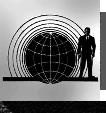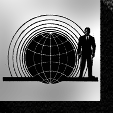THE 45 YEARS LATER AFFAIR:
Taking Another Look at The Girl From U.N.C.L.E.
Partly because the show was only around for one season, many critics judged The Girl From U.N.C.L.E. to be a complete failure as a TV series. Even today, many critics (such as John Peel of the Files Magazine series published in the 1980s) describe the series as "dreadful", "silly" or "just plain trash". (To be fair, it must be noted that Mr. Peel's attitude toward the show improved a bit after he studied the episodes again for his Files Magazines article on the show.)
Is this a fair assessment of the show? This reviewer does not think so. While it is true that I faithfully watched the series as a teenager when it was on NBC from 1966 to 1967 (along with its parent show, The Man From U.N.C.L.E.), and thus could be accused of not having been capable of mature judgment at the time, recently I was able to obtain copies of all 29 episodes of The Girl From U.N.C.L.E. series on DVD. At 50+ years of age I found the series to be in some ways even better than I had remembered it, and I thoroughly enjoyed watching most of the episodes. Yes, it is true that there were some (cough) less than stellar episodes in the series ("The Paradise Lost Affair", "The Drublegratz Affair", "The Petit Prix Affair", "The Furnace Flats Affair" and "The Carpathian Affair" come to mind) -- but other episodes of the series more than made up for these occasional clunkers.
There are very few TV series, either past or present, that don't contain at least a couple of clinker episodes. The extremely tight production schedules of network TV make this almost inevitable. But it is this reviewer's opinion that a TV series should be judged by its best episodes, not by its worst. Using this standard, I find that The Girl From U.N.C.L.E. easily holds its own.
There are some other caveats that should also be mentioned when judging a TV series that was made 45 or more years ago. TV shows from the 1960s should not be directly compared to shows being made today. The style of storytelling and methods of TV production have changed drastically in the last 45 years. It is not particularly fair to directly compare the generally lighter, simpler, more innocent, lower-budget TV shows of yesteryear against the ultra-realistic, violent, sexual, in-your-face, high-budget shows of today. The differences are not necessarily that of quality, or a measure of the professionalism of the people that created the show. It is more a matter of how cultural tastes and network politics have changed over the decades. A TV show from the 1960s should be assessed relative to its own cultural time period - not the cultural or political atmosphere of today.
That being said, The Girl From U.N.C.L.E. was very definitely a product of its times. It was a very contemporary series, accurately reflecting the style, attitude, clothing, and cultural fads of its time. It also boasted very slick production values for its time, very talented performers (Stefanie Powers herself being a good example), often great action sequences, and almost always very imaginative storylines. It is extremely doubtful that any of today's TV producers could successfully recreate the unique atmosphere of this series, even if they were to attempt it!
Of course, one of the most attractive features of The Girl From U.N.C.L.E. TV series is its setting, carried over from its parent series The Man From U.N.C.L.E.: the spy-laden Cold War of the 1960s, and the intricate, secretive, always-fascinating world of U.N.C.L.E., the United Network Command For Law and Enforcement. This aspect alone makes the series worth watching.
The second most attractive feature of The Girl From U.N.C.L.E. is Stefanie Powers. Being a male I may have to admit to some gender-related bias here, but I find Ms. Powers to be one of the most beautiful and appealing actresses of the last forty years -- right up there with Mary Tyler Moore of The Dick Van Dyke Show, Elizabeth Montgomery of Bewitched, and Diana Rigg of The Avengers! She definitely made The Girl From U.N.C.L.E. worth watching. It's hard to imagine the show working as well as it did without her presence (sorry Mary Ann Mobley).
After watching these episodes again I have also found that assessments of Noel Harrison's acting in this show considerably underrate him. Noel himself has never tended to rate himself as being a very good actor, but after watching only a few episodes of The Girl From U.N.C.L.E. (and the crossover episode "The Galatea Affair" from The Man From U.N.C.L.E.) I found his character of Mark Slate rapidly growing on me. His flip, dry assessment of the various goings-on in the episodes (some of them quite far out!) helped considerably to make those goings-on much more palatable. Particularly amusing was his oft-quoted catch-phrase "Don't worry, love -- I've been in far worse situations than this!", repeated various times in numerous episodes (usually just when things were looking their blackest). His other trademarks were his pronounced English accent, and the battered corduroy hat that he liked to wear.
Another great feature of The Girl From U.N.C.L.E. is its jazzy, driving theme music, arranged by Dave Grusin and based on the original Man From U.N.C.L.E. theme written by Jerry Goldsmith. Catchy and exciting, it is right up there with the best themes in TV history. Grusin went on to create a number of other memorable TV themes for shows such as It Takes A Thief, The Name Of The Game, Good Times and Baretta. (Unfortunately, many TV shows of today do away with the idea of a series theme completely.)
Stunt casting (a trick relatively unknown in 1960s television) was another favorite device of The Girl From U.N.C.L.E. The most outrageous use of this device was casting Boris Karloff in drag for "The Mother Muffin Affair" (which also featured Robert Vaughn as Napoleon Solo from The Man From U.N.C.L.E.). But many other well-known figures from the 1960s were cast as guest stars in the show, including Dom DeLuise, Wally Cox, Ted Cassidy and Lisa Loring (late of The Addams Family), John Carradine, Leslie Uggams, Yvonne De Carlo, Jack Cassidy, singer Peggy Lee, and Grayson Hall (from Dark Shadows).
But the one facet of The Girl From U.N.C.L.E. that I found most remarkable in viewing it 45 years later was its action set pieces - particularly the show's opening teaser segments. Some of these were absolutely spectacular. Some outstanding examples of this:
- In "The Dog-Gone Affair", April is tied upside-down above a pool of savage piranhas, and acid is put on the ropes holding her. She has 20 minutes to live before the acid eats through the ropes. Freeing her hands, April swings back and forth on the ropes until she can reach the control button that closes the fish tank. The cover clamps shut just as she falls onto it. A trap worthy of James Bond himself!
- The opening teaser sequence for "The Mata Hari Affair" is one of the best of the series. In the south of France under cover of darkness, April is lowered from a helicopter that Mark is piloting onto a moving train, where she cuts her way through the rubber connector between the cars to get inside. Meanwhile, somewhere ahead of the train a mysterious figure is planting a bomb on the railroad track. When the train reaches it, it blows up in a spectacular explosion. Though the explosion is probably a stock shot from some old MGM movie, it is still quite effective here.
- The teaser sequence in "The Low Blue Affair" is quite clever: impersonating a dead body at a funeral, a hit man assassinates the Duke of a small Mediterranean country by sitting up in his coffin and shooting the Duke as he passes by. The killer escapes by means of a trapdoor in the bottom of his coffin, and Mark chases him outside. A shooting match occurs, but Mark falls down a hillside and the killer finally outdistances him. The killer runs through a cemetery, but as he approaches the limousine that is his means of escape the driver of the car nonchalantly shoots him. The killer collapses against a tombstone in front of a startled Mark, who watches as the limo driver speeds off. Now he's really dead!
- The action-filled teaser from "The U.F.O. Affair" shows us what the rarely-seen U.N.C.L.E. car is really capable of. In an exciting chase sequence, Mark and April are being pursued by enemy agents in two automobiles. First, Mark fires a smokescreen from the back of the U.N.C.L.E. car that causes the car immediately following it to crash. Watching the second car on a small TV monitor, Mark then fires a pair of guns at the second pursuer. Then a helicopter appears, lobbing exploding shells down at the U.N.C.L.E. car. In return Mark fires a rocket of his own, which blows up the offending copter.
- The teaser for "The Double-O-Nothing Affair" shows Mark in a Thrush van, disguised as one of the enemy agents. Mark gets the information he wants on a miniature recorder and, in order to escape the agents, drops his watch on the van's floor and loudly announces that it is a motion sensitive bomb that will blow up if anyone moves. The watch/bomb turns out to be only a trick to delay the agents from following. Mark runs through the city streets shooting at the Thrush agents chasing him and throws the recording device onto the front seat of a parked car. During a gun battle Mark is wounded in the leg, and then the driver of the car (who was sleeping in the back seat at the time!) wakes up and takes off with the recorder. A group of armed U.N.C.L.E. agents show up to rescue Mark, but the recorder is lost.
- "The Kooky Spook Affair", the last episode of the series, is a fun mystery set in an old English castle amid fog-shrouded moors. There are a number of fight sequences in the episode, and one between Mark and the supposed "ghost" of the castle toward the end of the episode is particularly well staged.
Overall, there is much to like in this series. The sequence in "The Mata Hari Affair" where Stefanie Powers demonstrates her considerable dancing skills in a skintight ballet costume is guaranteed to raise the blood pressure of any male of the species a few notches. Most hand-to-hand fight sequences and stunt sequences are artfully handled. The sets and backgrounds for the episodes are often unique and interesting. And the dialogue between April and Mark is often snappy and clever.
Then why did the show only last one season? Many different factors contribute to the demise of network TV shows: studio politics, expense, poor scheduling, etc. No doubt all of these elements factored to some degree into the demise of The Girl From U.N.C.L.E. The show was expensive to produce; it was slotted against two other very popular shows (Daktari and Combat); the spy craze on TV was nearing its end; etc.
The real test of whether a show from the 1960s was truly memorable or not is to ask anyone over the age of 40 if they remember watching The Girl From U.N.C.L.E.
In most cases I believe the answer will be a resounding "yes"!
|
|

